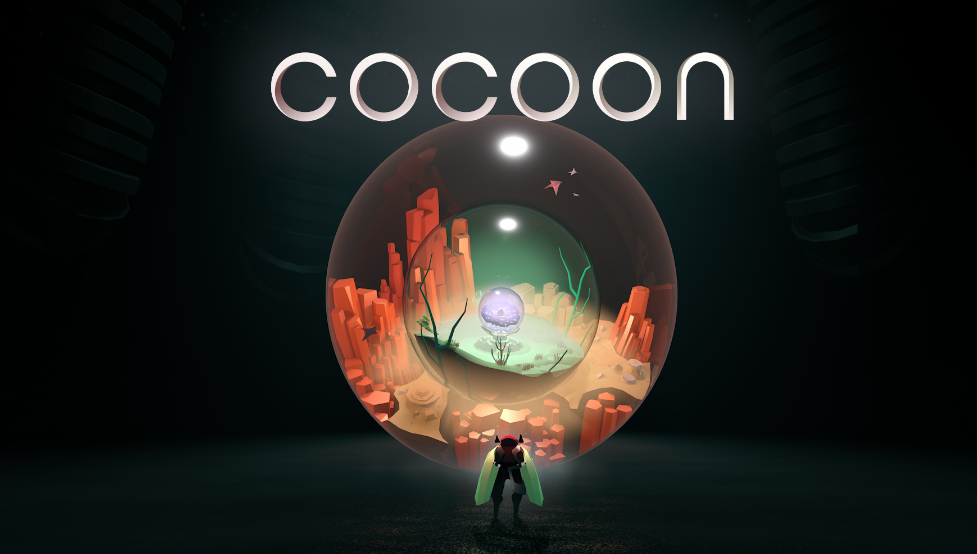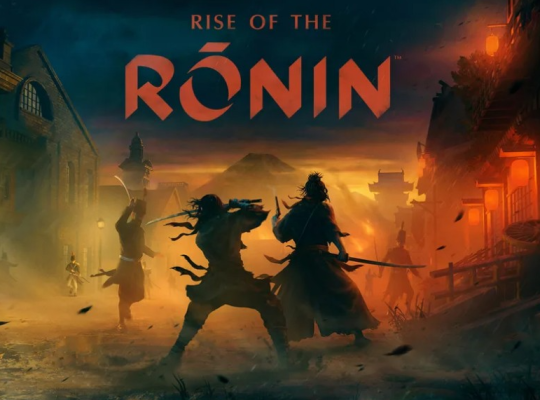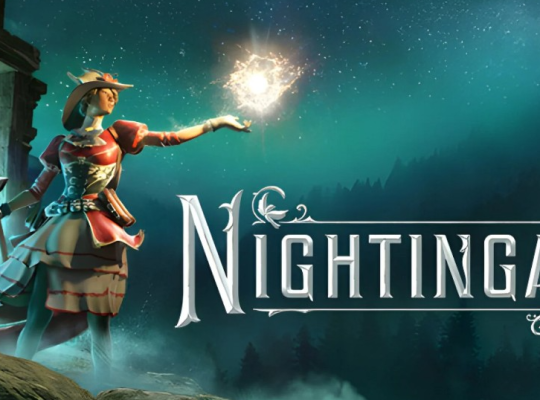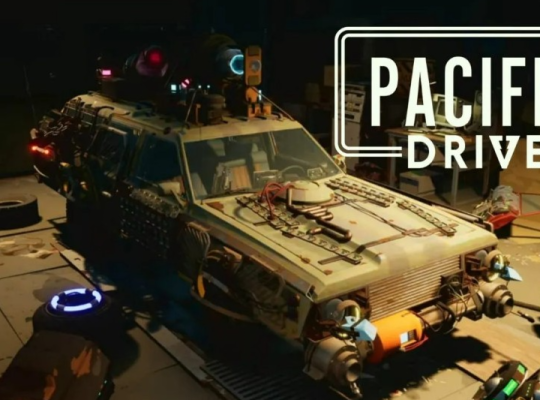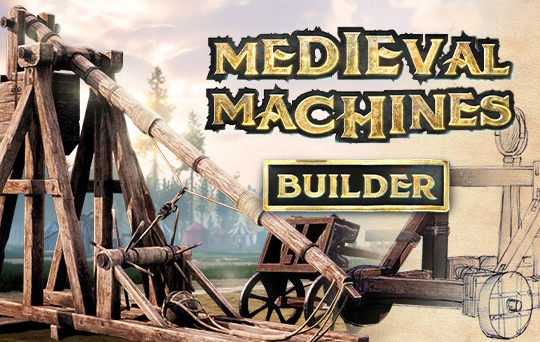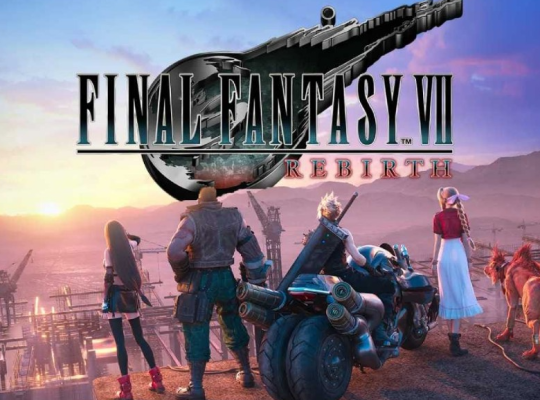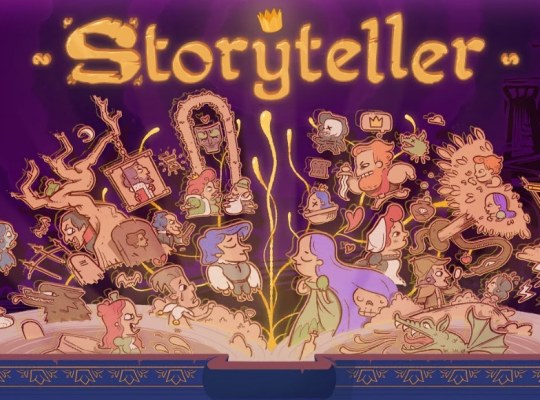Cocoon has fluttered onto our screens with resounding acclaim, offering a delightful escape for those pressed for time. Jeppe Carlsen, the lead gameplay designer behind titles like Inside and Limbo, collaborates with Geometric and Annapurna to unleash this mesmerizing puzzler. Catering to aficionados of mind-bending challenges, Cocoon invites players to cocoon themselves in its captivating world for a brief yet satisfying journey.
Within Cocoon, puzzles unfold in vibrant landscapes reminiscent of prog-rock album covers, accompanied by moody synths that could grace the vinyl inside. Pressing switches and activating bridges becomes an immersive experience, with everyday concepts assembled in unusual combinations, wrapped in a blend of plastics, metals, and organic matter that feels both familiar and alien. Cocoon raises unanswered questions, adding to its delightfully surreal ambiance.
As the protagonist, you embody a bug-like creature navigating an alien terrain, solving puzzles to advance. At times, a drone-type companion aids in breaking down fences, although it is vulnerable to certain monsters. The orbs, Cocoon’s distinctive feature, introduce a layer of complexity. Each orb contains a miniature world, contributing to larger puzzles and harboring challenges within. From prismatic crystal lands to gooey membranous underworlds, each orb presents a unique environment.
While the prospect of worlds within worlds may seem brain-breaking, Cocoon manages to challenge without overwhelming. The game maintains a mostly linear progression, using a creative UI to block off unnecessary areas. The character’s fluttering wings serve as cues for interactive elements, simplifying the controls. With the left analog stick for movement and the ‘A’ button for interaction, Cocoon keeps its controls streamlined yet powerful.
Players may initially feel bug-eyed, given the intricate puzzles that demand creative use of orbs and drones. Tasks range from transporting multiple orbs across limited spaces to memorizing symbols and leveraging the world’s mechanics. Each puzzle introduces functions that are subsequently repurposed in different ways, maintaining a seamless and consistent logic throughout the game.
While answers may not be obvious, the puzzles are both distinctive and gratifying to solve, accompanied by dramatic flair whenever progress unlocks. Cocoon champions thoughtful problem-solving, making the journey from knowing to doing a rewarding and engaging experience.
Cocoon: Unveiling a Multiverse of Puzzles
As you delve further into the game, Cocoon’s puzzles evolve into more substantial challenges, thanks in large part to its standout feature. This becomes evident when you reach a round rubber platform in the sand, triggering your character’s ascent from the world below. Suddenly, you find yourself in a grey industrial environment, with the previous world reduced to a large orange marble. Interacting with it, you hoist the orb onto your back, reminiscent of an ant carrying a seed.
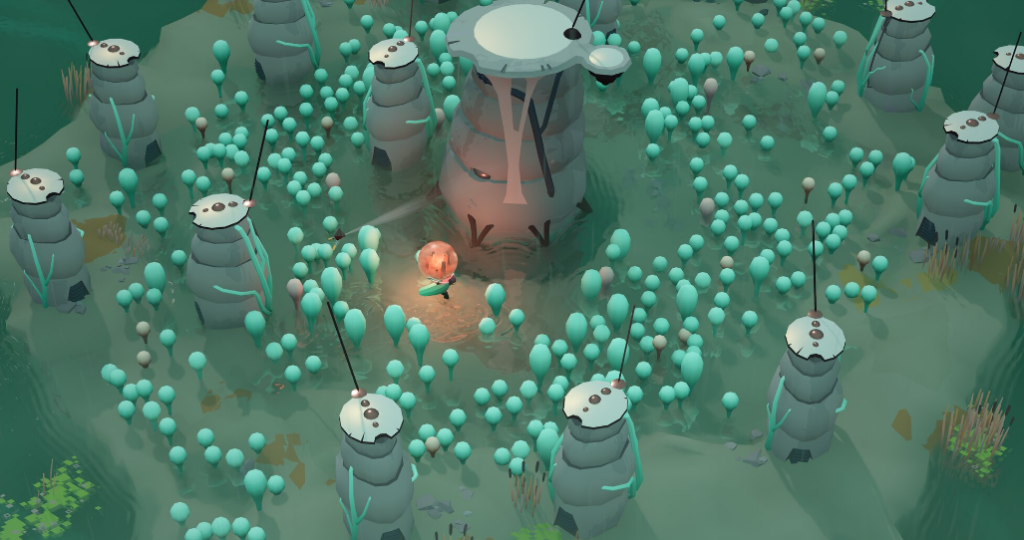
This orb-world serves as a power cell in your newfound surroundings. Placing it on designated plinths materializes bony bridges or conjures smooth plasticky platforms. Certain plinths offer a passage back to the original orange planet, strategically positioned where you left it. Engaging in a delicate dance of warping between worlds, you discover ways to manipulate obstacles in one realm using mechanisms in another.
And yet, this is merely the tip of the iceberg. As you acquire two orbs, then three, and eventually four, each representing a world of its own, the possibilities multiply exponentially. Certain sequences immerse you in a single world for a while, allowing you to forge ahead without concerning yourself with its position in the grander scheme. Each new biome unfolds, unveiling the machinery and organisms coexisting in a meticulously choreographed dance.
Other sequences spotlight one of the orb’s unique powers. For instance, the orange orb solidifies otherwise invisible walkways within its aura, crafting new paths in the grey world and later in a swampy green world—albeit only when you’re carrying it.
Frequent world hopping becomes a necessity, and Cocoon masterfully pushes this concept to marvelous conclusions. What if you need to carry the orange orb to a location requiring the green orb? The solution: stash the green orb inside the orange world, then retrieve it at your destination.
Each twist in the concept takes a few minutes to click into place, but Cocoon’s iterative approach keeps you on track, preventing you from straying too far off course. The puzzles are clever yet not overly complicated, consistently presenting a blend of strangeness and logic. You find yourself effortlessly navigating physical paradoxes, making them feel like second nature.
Occasionally, the game prompts you to think more expansively, requiring slight backtracking to uncover what you need. While it can be challenging to recall your location in a world if left unvisited for a while, Cocoon ensures you never feel overwhelmed or lost in its mesmerizing multiverse of puzzles.
Cocoon: The Harmonious Dance of Worlds
The fascination of globe-jumping in Cocoon lies not only in the ingenious and tidy puzzles but also in the extraordinary sense of relativity it evokes. In the blink of an eye, your entire world transforms into a mere object in the next, offering a playful representation of the cosmic scale. Here, the enormity of a planet becomes a mere marble against the backdrop of the universe.
Simultaneously, it serves as an expression of interlocking ecosystems, functioning in tune with one another. Each marble is essential to life, and you, as a seemingly insignificant bug, become a world-changing agent, integral to the grand scheme.
Cocoon maintains its magnificent audiovisual design throughout, creating a lush environment for puzzles. The designs, initially nonsensical, seamlessly make perfect sense as you engage with them, building on previous concepts while keeping you guessing about what comes next. Kaleidoscope architecture seamlessly blends natural vistas into cellular structures, always with a touch of the ordinary that you can grasp instantly.
Pillars strategically dot the landscape, allowing your passage but presenting a barrier to orbs, akin to bars gating airport escalators. Fields of lollipop plants sway like rubbery mushrooms as you navigate through them. A transport vessel encapsulates you with clank-click precision, revealing a striking resemblance to a giant jam sandwich biscuit.
Cocoon invites players into a harmonious dance of worlds, where the boundaries between the extraordinary and the familiar blur in a captivating exploration of interconnectedness and cosmic beauty.
Cocoon: A Fresh Chapter Unveiled
While Cocoon remains rooted in a meditative experience, it diverges with the introduction of boss fights against colossal bug guardians within each orb’s world. These encounters distinguish themselves as majestic spectacles rather than formidable battles, aligning with the Zelda-style boss genre, blending puzzler elements with top-down action.
The inaugural confrontation introduces what can only be described as Robo Mothra, unleashing bullet-hell-style projectiles. Navigating the intricate mass of missiles requires finding opportune spaces, coupled with precise timing to grab an orb bomb and forcefully collide with the adversary. Each boss presents a distinctive pattern to decipher, slightly elevating the heart rate without inducing sweat (for perspective, defeating each boss required only two to three attempts).
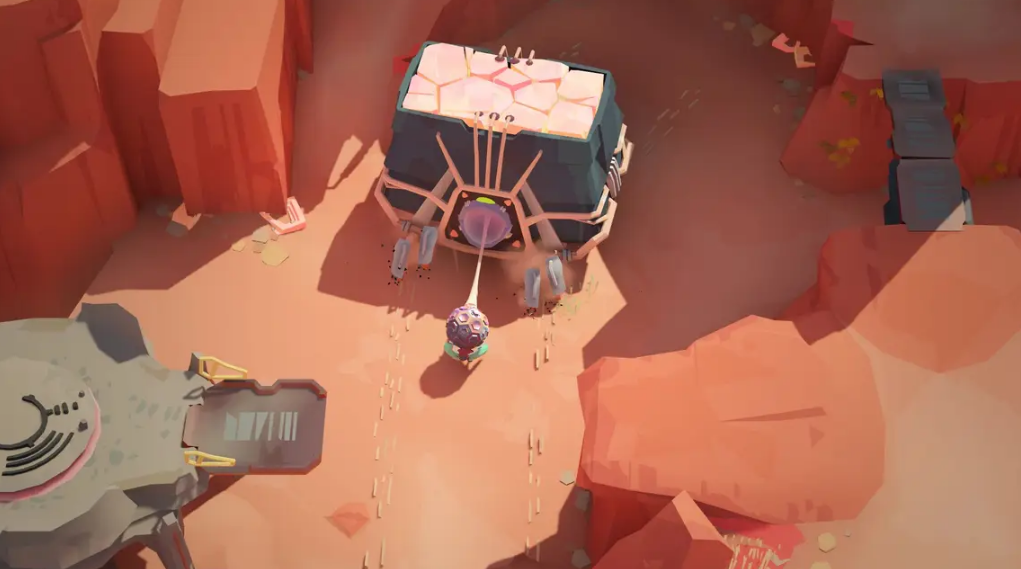 This approach allows players to marvel at the grandeur of these giant guardians, with each subsequent encounter surpassing its predecessor in impressiveness and imposing presence. Their designs ingeniously fuse insect and alien aesthetics, resembling the monstrous offspring of a bug taking a plunge into a vat of radioactive goop. Truly spectacular.
This approach allows players to marvel at the grandeur of these giant guardians, with each subsequent encounter surpassing its predecessor in impressiveness and imposing presence. Their designs ingeniously fuse insect and alien aesthetics, resembling the monstrous offspring of a bug taking a plunge into a vat of radioactive goop. Truly spectacular.
Whether engaged in colossal guardian encounters or immersed in tranquil moments of puzzle-solving, Cocoon consistently provides subtle nudges in the right direction. Emphasizing the intuitive nature of the game is crucial, as initial impressions might erroneously suggest a lack of communication. No explicit instructions or tutorials exist in this wordless world, with no text pop-ups directing players to press ‘A’ to grab the orb. However, Cocoon is in constant communication with players.
The game adeptly guides players through smart environmental layouts, responsive controller feedback (a controller is highly recommended over a keyboard and mouse), a seamlessly calibrated puzzle difficulty gradient, and musical cues. Particularly noteworthy are the musical interludes.
While Cocoon features minimal music overall, warm synths frequently emerge during puzzle sections, subtly affirming when players are on the right track or dramatically punctuating a eureka moment. These delicate nudges collectively contribute to the game’s sense of flow, with small waves of non-verbal cues gently leading players along this captivating journey.
Cocoon: A Silent Symphony
The mode of non-verbal communication extends to Cocoon’s narrative. In contrast to other wordless games like Limbo, Inside, and Journey, Cocoon’s story remains even more enigmatic. The game hints at a narrative through environmental clues as your insect companion explores the remnants of an ancient world. Traversing caverns, deserts, swamplands, and ruins imbues the atmosphere with a quietly mournful tone. Each orb’s world harbors multiple ‘Moon Ancestors’—bug creatures that can be liberated from their stony slumber. However, the specific role they play in the overarching story remains elusive, as someone with only a single playthrough cannot provide a comprehensive interpretation.
While the conclusion confirms certain aspects (with a secret ending to decipher), Cocoon’s allure and atmosphere prove more than sufficient to propel players through the experience. Emphasizing that screenshots no matter how impressive, fail to capture the game’s essence is essential. This alien world possesses a distinct presence, with each area pulsating with rich colors and textures. Notably, the lighting stands out—the orb’s luminescent glow provides comfort in the darkest caverns.
A standout feature for me is the soundscape. Cocoon incorporates minimal music, relying heavily on environmental ambiance, such as the gentle thuds and groans of machinery or the squelch of oozing tendrils and gloopy, squishy nodes. The opening of a doorway transforms into a cinematic event, marked by the low rumbling as it shifts its hulking weight, the high buzz of electric currents racing through wires, and the mechanical whirring as its components fold away.
Even the subtle clanks of raindrops hitting a metallic platform induced enough serotonin to last a month. This ambiance is exceptional, creating an impression that the game is breathing, even in moments of total silence. A recommendation to elevate the experience is to turn up your headphones; it’s genuinely incredible.
Cocoon’s five-hour runtime offers a plethora of discoveries. The world design and atmosphere prove captivating, but the standout element is the world-hopping puzzle mechanic. The game’s final set of puzzles ventures into truly mind-bending territory, defying easy explanation.
Without being overly ambitious, during the concluding stretch of Cocoon’s puzzles, I felt akin to a musician whose ears have been finely tuned to pick up elements in music. I understood what the game expected from me, and I followed suit. It’s a silent language that players learn to translate. By eliminating unnecessary noise, Cocoon emerges as one of the finest puzzle adventure games of 2023. I’ve learned to discern Cocoon’s silent harmonies, and they’re undeniably beautiful.
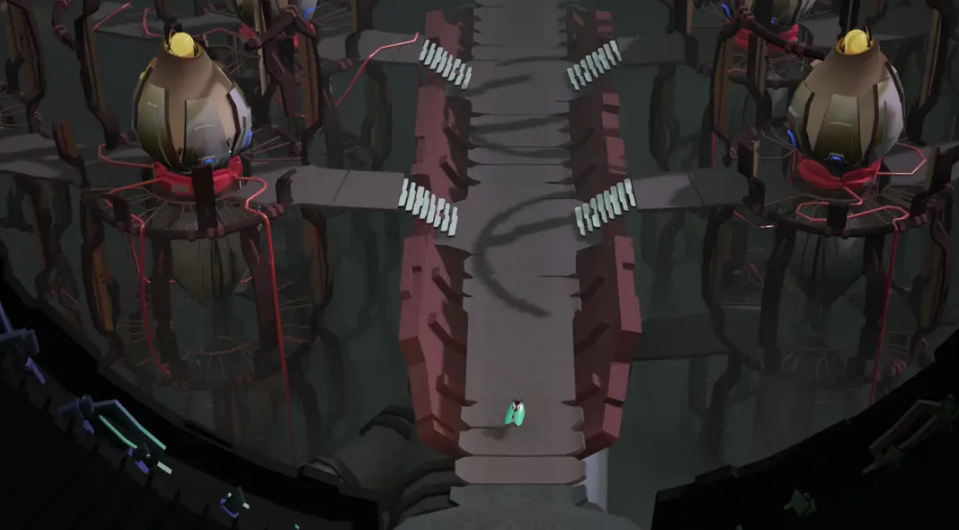
Guardians of the Orb: A Puzzling Challenge
In Cocoon, each distinct world is safeguarded by a unique guardian—an alien and insect-like entity ranging from whirling cephalopods to multi-legged leviathans. These encounters diverge from traditional combat, adopting a puzzle-like design. Despite the apparent threat, these battles entail learning, anticipating, and overcoming patterns. While this aspect introduces an element of trial and error, especially for less skilled players, Geometric Interactive employs animation, sound, and gameplay to instruct players about each guardian’s behavior. Player experiences may vary, and some may find the learning curve more forgiving.
Upon defeating each guardian, the corresponding orb acquires a unique ability. For instance, defeating the guardian of the desert world allows you to carry it on your back, unveiling previously unseen pathways of orange glass in other realms. The green orb facilitates transitioning through vertical platforms that alternate between solid and gaseous with a button press.
However, the true challenge lies in puzzles that expand across multiple worlds simultaneously. These interconnected worlds coexist whether you’re within them or carrying them on your back, with actions in one world influencing others. Taking worlds into one another and visualizing each orb’s activities contribute to the complexity of the puzzles.
The satisfaction of solving these puzzles is exquisite, accompanied by eureka moments as players figure out the what and how—a testament to impressively well-thought-out game design that effectively educates players and eliminates unnecessary elements.
Automated companions occasionally assist, serving as guides to the destination and keys to unlocking doors or activating machinery. A delightful touch includes their buzzing and chirping speeding up or slowing down to indicate proximity to the right world or objective. This subtle cue aids players in recalling the hierarchy of manipulable worlds.
Cocoon’s impeccably clean art style features smooth lines and bold, bright colors, a departure from the dual tones of Limbo and the desaturated world of INSIDE. Complementing the visual experience is a delightful electronic/synth soundtrack, occasionally reminiscent of John Carpenter’s “The Thing.”
The World Unveiled: A Silent Symphony
Entering Cocoon, it’s crucial to note that there’s minimal narrative to spoil in the traditional sense—no words, dialogue, or audio logs. Instead, the game is rich with secrets, inviting players to unravel them independently.
The identity and purpose of the moth-like protagonist, as well as the reason for their presence, are deliberately left for players to discern. Cocoon, akin to the rules governing its myriad worlds, fosters an enigmatic atmosphere, different from the lingering discussions sparked by INSIDE’s ending. While Cocoon’s conclusion may also evoke considerable conversation, its narrative approach is more elusive.
Cocoon stands as a testament to impeccable game design, showcasing how the medium can effectively convey mechanics and intent without uttering a single word. For players inclined toward problem-solving without the use of firearms, delving into the captivating realms of Cocoon is a must. The choice, and indeed, the world(s), rests in your hands.
Automated companions occasionally lend a helping hand, guiding players toward objectives or unlocking doors and machinery. The subtle cues from these companions, such as buzzing and chirping, offer non-verbal guidance, indicating proximity to the right world or objective. It’s a testament to Cocoon’s thoughtful design that imparts crucial information without relying on explicit instructions or tutorials. The game’s reliance on environmental layouts, controller feedback, a well-calibrated puzzle difficulty gradient, and musical cues creates a seamless flow, allowing players to navigate the wordless world with intuitive ease.
Cocoon’s visual presentation is a masterstroke, diverging from the dual tones of Limbo and the desaturated world of Inside. The art style boasts smooth lines, bold, vibrant colors, and a psychedelic aesthetic that perfectly complements the cosmic theme. Each world unfolds with rich textures, kaleidoscopic architecture, and a seasoning of the ordinary juxtaposed with the alien. Pillars jut from the ground like bars gating airport escalators, lollipop plants wobble like rubbery mushrooms, and transport vessels resemble giant jam sandwich biscuits. The visual spectacle, coupled with exceptional lighting, creates an otherworldly presence that captivates players.
As players delve deeper into Cocoon’s five-hour runtime, they encounter diverse biomes, each revealing the intricate dance between machine and organism. The interplay of these elements unfolds in choreographed lockstep, creating an engrossing spectacle that transcends the boundaries of conventional puzzle design. The seamless integration of puzzle mechanics and world-building stands as a testament to Cocoon’s meticulous craftsmanship.
Cocoon: A Psychedelic Puzzle Odyssey
In the realm of puzzle platformers, Cocoon emerges as a mesmerizing odyssey that boldly pushes the boundaries of psychedelia. Crafted under the ingenious design of Jeppe Carlsen, the visionary behind Inside, Cocoon not only propels players through a mind-bending cosmic journey but also invites contemplation on the cyclical nature of work, life, and the interconnected role within a grander scheme. Despite its brevity, Cocoon offers an alluring experience with well-hidden collectibles, beckoning enthusiasts of Limbo or Inside and those in search of a contemplative puzzle adventure.
Cocoon’s puzzles serve as poignant provocations, urging players to engage in thoughtful consideration. However, the journey is not without its challenges, as some puzzles demand experimentation when immediate solutions elude grasp. This occasionally leads to moments of backtracking or the nuanced task of transporting orbs across different locations, introducing an element of potential tedium.
Yet, in the grand tapestry of puzzle games, Cocoon emerges as an exceptional contender, holding its ground among genre greats. Its brilliance is underscored by exceptional art design, clever construction, and a compelling pace that renders it a daunting task to set aside once the cosmic journey unfolds. Superficially unassuming, Cocoon reveals its true essence when players delve into its intricate worlds, leaving an indelible mark on their gaming experience.
At its core, Cocoon defies conventional narratives, offering a silent yet profound exploration of an otherworldly landscape. There are no words or dialogues to guide players; instead, the narrative unfolds through cryptic environmental cues as players guide a moth-like protagonist through ancient caverns, deserts, swamplands, and ruins. The absence of explicit narrative leaves much open to interpretation, inviting players to decipher the story through the evocative ambiance and hidden secrets scattered across the cosmic tapestry.
In conclusion, Cocoon stands as a breathtaking puzzle platformer that not only challenges the intellect but also captivates the senses. Jeppe Carlsen’s design brilliance shines through, offering players a cosmic journey through captivating puzzles and thought-provoking themes.
While the game’s puzzles may occasionally veer into experimental territory, demanding both consideration and exploration, Cocoon’s overall design, exceptional artistry, and compelling pace position it among the greats of the puzzle genre. It is a silent yet profound language of puzzles and worlds, inviting players to unravel its mysteries, contemplate its themes, and leave an indelible mark on their gaming odyssey.
Also See – Pac-Man Review – A Decadent Treat From The Past Games







